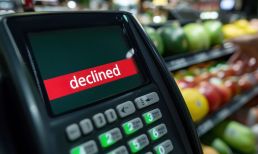Recent announcements from some marquee names in financial services, and commercial partnerships, underscore the use of data, down to the consumer level, in crafting ever-more-relevant card-linked offers.
In doing so, the traditional players make the leap, digitally, even further into data analytics.
In just the latest example, Experian, which, arguably, most consumers know as a credit reporting company, said this week that it has acquired a stake in Reward, which powers bank and retail rewards programs. The two companies had already been working together, and the joint efforts will leverage Experian’s data “to fuel Reward’s offerings across banks and retail” setting.
As detailed on its site, Reward uses advanced predictive analytics from spend, location and demographics to help client firms understand cardholder spend more to “co-create offers” that are personalized through the company’s platform.
Elsewhere, as announced last month, J.P. Morgan Chase launched Chase Media Solutions, which enables advertisers to use consumer transaction data, allowing them to target Chase’s customer base of 80 million individuals with customized offers, discounts and cash back rewards tailored to their purchasing behaviors. The move comes amid the integration of card-linked marketing platform Figg, which Chase acquired in 2022.
What the Data Show
PYMNTS Intelligence data, as detailed earlier this year, show that card-linked offers gain widespread use by consumers when the options are presented, and individuals actually take advantage of the offers. In the survey of 2,108 consumers in the United States, and via the report “Card-Linked Offer Growth Hinges on First-Time Users,” a collaboration with Banyan, we found that 93% of consumers plan on maintaining or increasing their use of card-linked offers in the next year.
Advertisement: Scroll to Continue
There needs to be a bit of prompting, as two-thirds of individuals wound up using card-linked offers after seeing one to four offers. As many as 41% consumers said they were “highly familiar” with card-linked offers before using their first one. The data indicated, too, that familiarity is critical: 44% of consumers said it was their primary bank or a merchant they patronized when using a card-linked offer.
Discounts are the most-cited reason — at 55% of consumers— for people to engage with a card-linked offer for the first time, and the consumers who are most intrigued by a deal will start using these card-linked offers. The relevance of an offer is attractive for 25% of new card-linked offer users, per the study, which indicates the importance of transaction level and demographic data, as noted above. A simplified checkout process was important to 30% consumers. About 42% of card-linked users said they’d gotten the offers via email, and 27% said they’d first heard about the card-linked offers via mobile apps.




